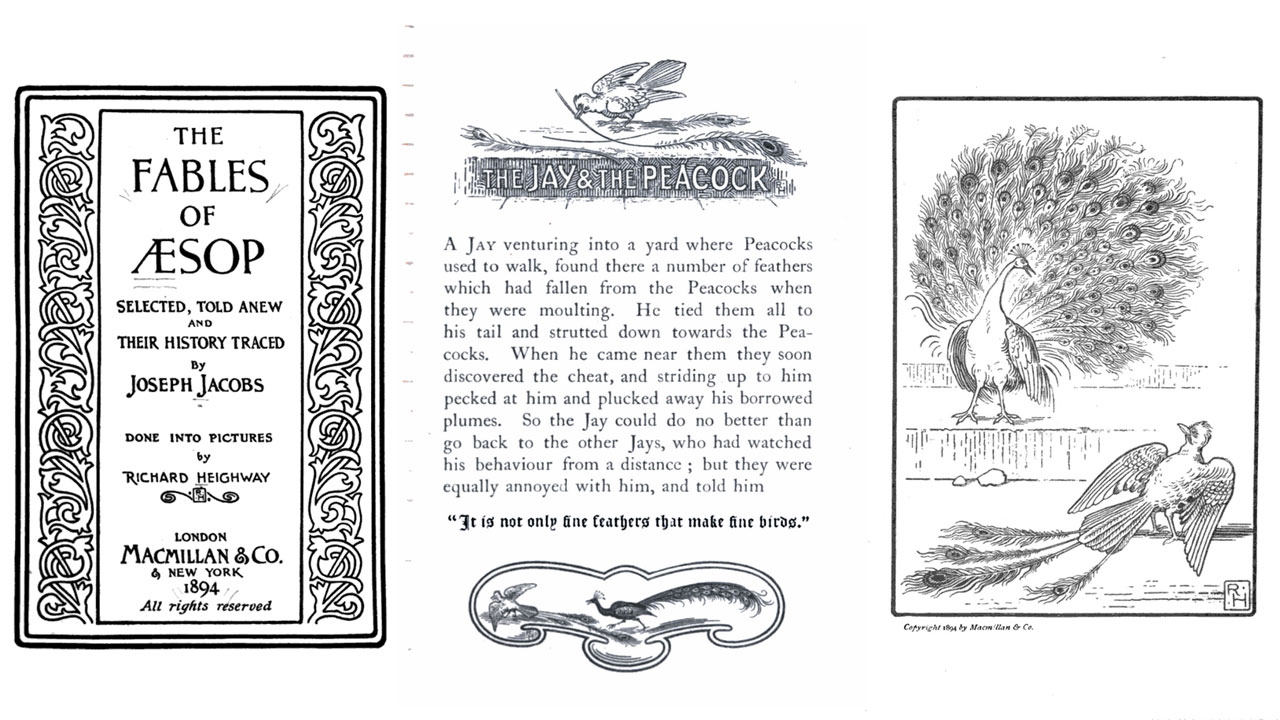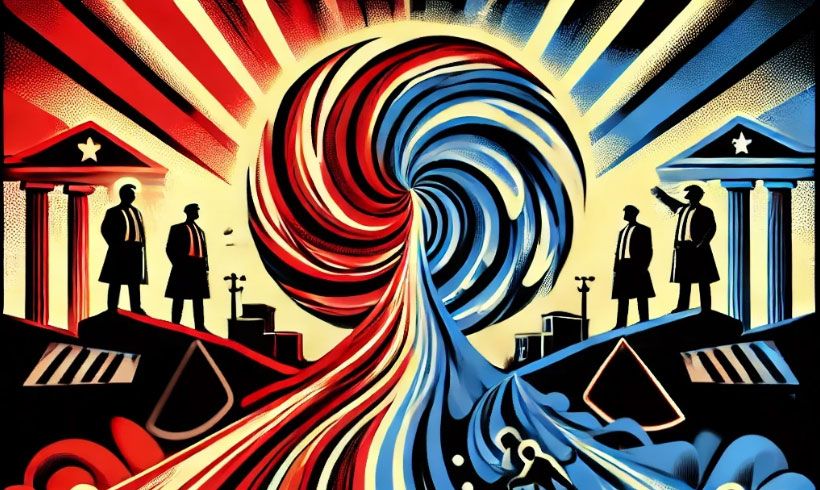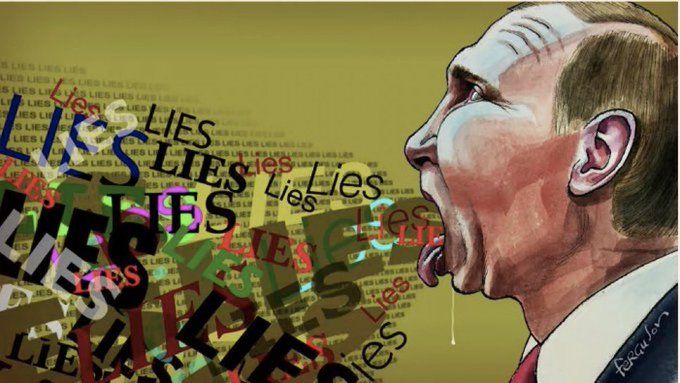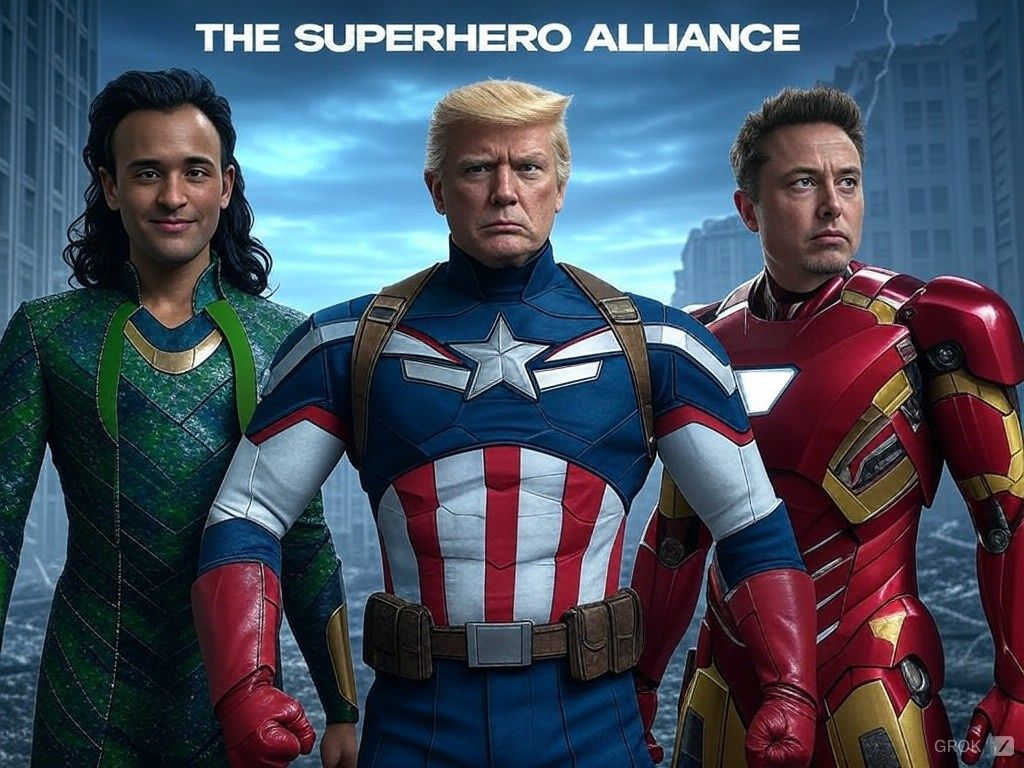Intriguingly, while searching for images to illustrate this article, I was surprised to find that unlike in 2023, when the display was documented with numerous photos and social media posts, in 2024, not a single photo of the three flags is available. Not one! This one is from 2023 when the event was well documented.
Putin obstinately dodged the question, denying any involvement by the government or the presidential administration in the decision to hoist three different flags: “I can tell you that it was not a political decision by the Government or the Presidential Administration.” Even more: he said, “This was a decision by Gazprom, as strange as it may seem. Mr. Miller, of course, informed me about his intention to do this.” I don't understand what official connection Gazprom has with SPIEF 2024. Officially, SPIEF 2024 is organized by the Roscongress Foundation.
Moreover, when Karim Talbi directly compared the hoisting of three different historical flags to France’s flag protocol, “In France, we don't simultaneously fly the flag of the last king of France, the flag of Napoleon, and the flag of the Republic,” Putin was stuck with the lame response: “...it was his private initiative, his company’s initiative;” An initiative by a company that officially isn’t the event organizer! I wonder if the heads of state and officials present knew where they were going: to SPIEF 2024 organized by the Roscongress Foundation or another event organized by Gazprom.
But this isn't the only attempt by Russian presidents to revive symbols of Russian imperialism: Russia's official flag is a white, blue, and red tricolor. The official flag of the Russian presidency is the tricolor with the imperial symbol of the last Tsar of Russia. Dear Russian citizens, do you elect a president or a Tsar? After the last election results, I think the answer is clear: the Tsar chooses himself… You just fool yourselves with some wooden stamps and shuffle some papers through bags you call “votes.”
I was reminded of La Fontaine's and Aesop's fables about the jay that adorned its tail with peacock feathers. This is how Putin seemed to me with his desperate attempts to avoid answering the direct question repeatedly posed by French journalist Karim Talbi from France-Press: what do the three flags – the Russian flag, the Soviet Union flag, and the imperial flag of Alexander II – signify to Putin? These flags are Putin's peacock feathers. But he knows we know they are peacock feathers, not his own sly jay feathers. That’s why he blames others (specifically the Gazprom director) for putting historical Russia's peacock feathers on his tail.
 The Jay & the Peakock an Aesop fable
The Jay & the Peakock an Aesop fable
The fallacies in Putin's answers are below taken from the List of fallacies from the full interview with Putin, the St. Petersburg International Economic Forum, June 05, 2024:
.....
Karim Talbi: "And my second question. It’s already dark, but behind you, there are three flags visible: the flag of Russia, the flag of the Russian Empire, and the flag of the Soviet Union. The flag of the Russian Empire is the highest, let's say."
Putin: "No, no – they are all equal."
- False Equivalence: Putin claims that all three flags (Russia, Russian Empire, Soviet Union) are equal, ignoring their different historical and political contexts. This falsely equates their significance and the messages they send.
Karim Talbi: "Which one is closer to your heart?"
Putin: "The official flag of the Russian Federation, the tricolor, is the official flag of Russia. That's the first thing. Secondly, I can tell you that it was not a political decision by the Government or the Presidential Administration. This was a decision by Gazprom, as strange as it may seem. Mr. Miller, of course, informed me about his intention to do this. I can reveal this discussion to you; there's nothing secret here. I said, 'Why? We have a state flag.' He replied, 'This is all part of our history.' I believe it was [Alexander II] who established the Imperial flag. He thought it should include black and yellow colors. Why? Because these are the colors of the Russian coat of arms. That's how it was presented in the 19th century. Peter I established the state flag, the tricolor. The flag of the Soviet Union, especially since it is associated with the victory over Nazism, also has the right to exist in our history and public consciousness. I didn't object, I said, 'Okay, if you want to, go ahead.'"
- Red Herring: "Secondly, I can tell you that it was not a political decision by the Government or the Presidential Administration. This was a decision by Gazprom..." The initial question was about which flag is closer to Putin's heart. However, Putin diverts the conversation to the process and historical justification for Gazprom's decision to display multiple flags. This shift in focus serves to distract from answering the personal nature of the original question.
- Appeal to Authority (Ad Verecundiam): "Mr. Miller, of course, informed me about his intention to do this... I believe it was [Alexander II] who established the Imperial flag." Putin references Mr. Miller and historical figures like Alexander II and Peter I to validate the presence of the flags. This appeal to authority suggests that the decision is justified because it aligns with historical precedence and authority figures, rather than directly answering the question about his personal preference.
- Equivocation: "The flag of the Soviet Union, especially since it is associated with the victory over Nazism, also has the right to exist in our history and public consciousness." By stating that the flags "have the right to exist in our history and public consciousness," Putin uses the notion of historical significance to conflate different meanings of legitimacy (historical vs. emotional or personal significance), thereby avoiding a direct answer to which flag is closer to his heart.
- False Dilemma: "There’s no need to look for hidden meanings, no need to look for some subtext, and no need to invent any imperial ambitions – there are none." By emphasizing that all flags are part of Russia’s history and have their own basis, Putin sets up a situation where the implication is that one must either accept all flags equally or reject them, ignoring the possibility of having a personal preference among them.
- Straw Man: "There’s no need to look for hidden meanings, no need to look for some subtext, and no need to invent any imperial ambitions – there are none." Putin addresses an implied accusation of having imperial ambitions, which the question did not directly raise. By refuting this constructed argument, he deflects from the personal nature of the original question.
- Non Sequitur: "Everything has its own basis, that's all. There’s no need to look for hidden meanings, no need to look for some subtext, and no need to invent any imperial ambitions – there are none." The conclusion that there are no hidden meanings or imperial ambitions does not logically follow from the historical explanations given. This statement does not directly address why the flags are emotionally significant to Putin.
- False Dilemma: "I said, 'Why? We have a state flag.' He replied, 'This is all part of our history.'" Putin presents a binary choice between having only the state flag or including all historical flags, ignoring the possibility of having a nuanced stance that recognizes history without endorsing all historical symbols equally.
- Circular Reasoning: "The flag of the Soviet Union, especially since it is associated with the victory over Nazism, also has the right to exist in our history and public consciousness." The argument that the Soviet flag has the right to exist because it is part of history is circular. It assumes the conclusion (that the flag should be displayed) within the premise (because it is part of history), without providing additional justification.
- Ad Hominem (Implied): "There’s no need to look for hidden meanings, no need to look for some subtext, and no need to invent any imperial ambitions – there are none." This statement implies that those questioning the display of the flags are inventing false narratives or are paranoid, rather than addressing their concerns directly.
- Shifting the Burden of Proof: "There’s no need to invent any imperial ambitions – there are none." By asserting there are no imperial ambitions without providing evidence, Putin shifts the burden of proof onto those who might argue otherwise, rather than substantiating his own claim.
- Evasion: "Everything has its own basis, that's all." This statement evades the direct question about personal preference by providing a generalized statement that avoids revealing Putin's own feelings about the flags.
Karim Talbi: "In France, we don't simultaneously fly the flag of the last king of France, the flag of Napoleon, and the flag of the Republic. These flags – sorry, when I came here, I wasn't the only one who immediately noticed them. They are very visible."
Putin: "Well, they are not anywhere else. Mr. Miller, it was his private initiative, his company’s initiative; he is interested in Russian history, the history of Russia. Once again, I repeat to you: it is connected only with history and paying tribute to the generations that lived with these banners and flags and achieved significant success in the development of our state."
- Evasion (Red Herring): "Well, they are not anywhere else. Mr. Miller, it was his private initiative, his company’s initiative; he is interested in Russian history, the history of Russia." Putin diverts attention from the question about the visibility and significance of the flags by focusing on Mr. Miller's initiative and interest in Russian history. This does not directly address the concern raised by Karim Talbi about the simultaneous display of different historical flags.
- Appeal to Authority (Argumentum ad Verecundiam): "Mr. Miller, it was his private initiative, his company’s initiative; he is interested in Russian history, the history of Russia." By referencing Mr. Miller's authority and interest in history, Putin implies that the decision is justified without addressing the substance of the question. This appeal to authority sidesteps the broader implications of the display.
- Appeal to Tradition (Argumentum ad Antiquitatem): "Once again, I repeat to you: it is connected only with history and paying tribute to the generations that lived with these banners and flags and achieved significant success in the development of our state." Putin justifies the display of the flags by appealing to tradition and historical significance. This fallacy suggests that because something is traditional or historical, it is therefore correct or appropriate, without addressing the current context or the potential implications.
- False Equivalence: "It is connected only with history and paying tribute to the generations that lived with these banners and flags and achieved significant success in the development of our state." Putin equates the historical significance of the flags with their appropriateness for display, ignoring the different contexts and the potential for these symbols to evoke different sentiments today. This creates a false equivalence between historical reverence and contemporary political implications.
- Non Sequitur: "Mr. Miller, it was his private initiative, his company’s initiative; he is interested in Russian history, the history of Russia." The conclusion that the flags should be displayed because of Mr. Miller's interest in history does not logically follow from the premise. This response does not directly address why the flags are prominently displayed and how it relates to the question about their visibility and significance.
- Shifting the Burden of Proof: "Once again, I repeat to you: it is connected only with history and paying tribute to the generations that lived with these banners and flags and achieved significant success in the development of our state." Putin shifts the burden of proof onto those questioning the display of the flags, implying that they need to prove there is a problem with it. He does not provide substantial justification for why the flags should be displayed simultaneously in the current context.
- Straw Man: "It is connected only with history and paying tribute to the generations that lived with these banners and flags and achieved significant success in the development of our state." Putin constructs a straw man argument by simplifying and misrepresenting the concern about the flags. He suggests that the only issue is historical recognition, ignoring the potential political and symbolic implications of displaying these flags together.
......
Overall, Putin's response employs several fallacies to deflect from the core issue raised by Karim Talbi about the simultaneous display of different historical flags. By focusing on tradition, authority, and historical reverence, he avoids engaging with the current significance and potential implications of these symbols.
Putin was so upset about being caught off guard that immediately after answering Karim Talbi's questions, he announced he wanted to end the interview:
...
Andrey Kondrashov: We have one more short question from the Spanish agency EFE.
Putin: We'll be sitting here until morning at this rate. Shall we move it to tomorrow? We still have to go to Pushkin, to Tsarskoye Selo.
...






